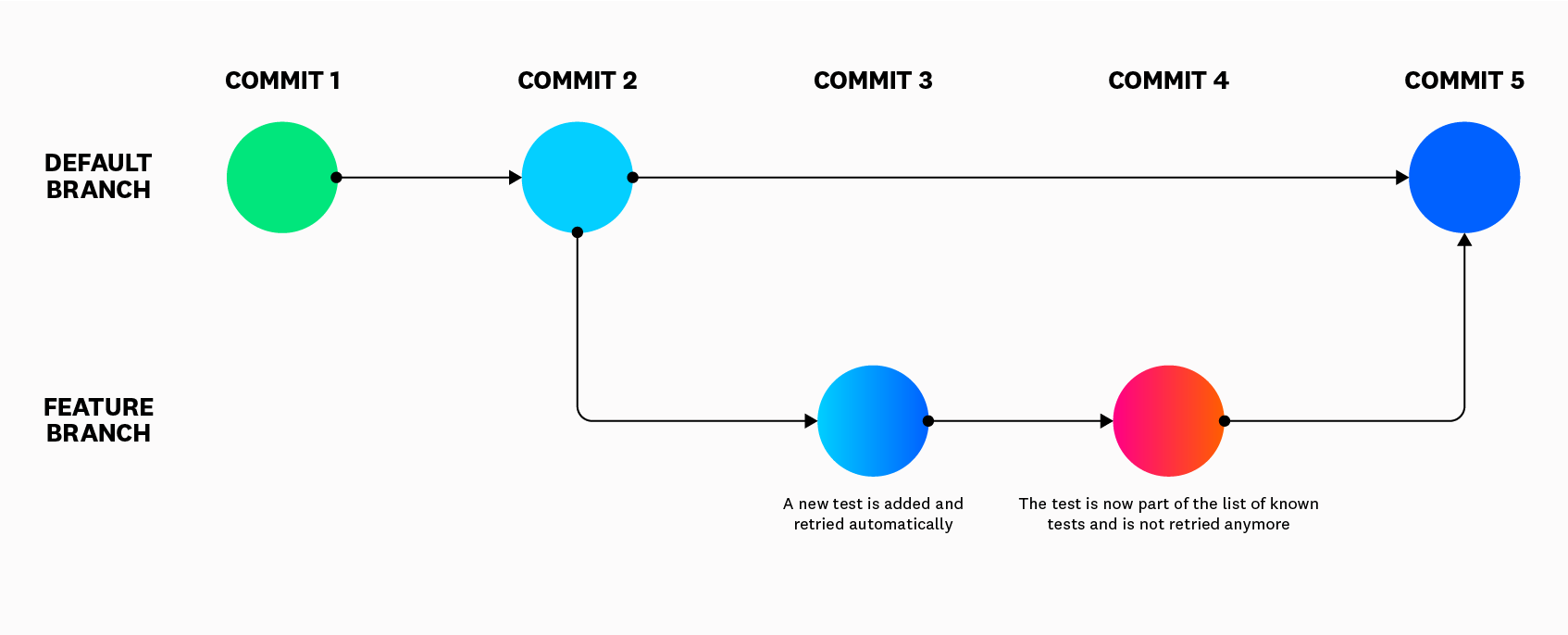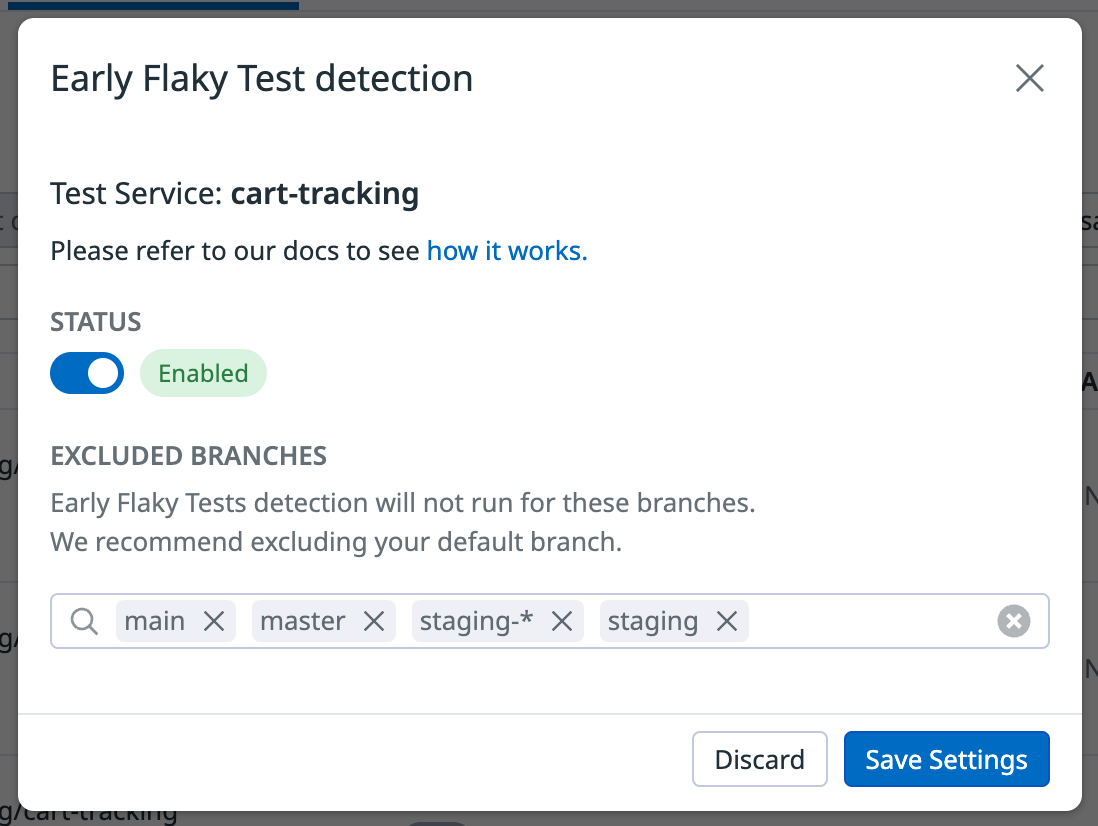- Principales informations
- Getting Started
- Datadog
- Site Datadog
- DevSecOps
- Serverless for AWS Lambda
- Agent
- Intégrations
- Conteneurs
- Dashboards
- Monitors
- Logs
- Tracing
- Profileur
- Tags
- API
- Service Catalog
- Session Replay
- Continuous Testing
- Surveillance Synthetic
- Incident Management
- Database Monitoring
- Cloud Security Management
- Cloud SIEM
- Application Security Management
- Workflow Automation
- CI Visibility
- Test Visibility
- Intelligent Test Runner
- Code Analysis
- Learning Center
- Support
- Glossary
- Standard Attributes
- Guides
- Agent
- Intégrations
- OpenTelemetry
- Développeurs
- Authorization
- DogStatsD
- Checks custom
- Intégrations
- Create an Agent-based Integration
- Create an API Integration
- Create a Log Pipeline
- Integration Assets Reference
- Build a Marketplace Offering
- Create a Tile
- Create an Integration Dashboard
- Create a Recommended Monitor
- Create a Cloud SIEM Detection Rule
- OAuth for Integrations
- Install Agent Integration Developer Tool
- Checks de service
- IDE Plugins
- Communauté
- Guides
- API
- Application mobile
- CoScreen
- Cloudcraft
- In The App
- Dashboards
- Notebooks
- DDSQL Editor
- Alertes
- Infrastructure
- Métriques
- Watchdog
- Bits AI
- Service Catalog
- API Catalog
- Error Tracking
- Service Management
- Infrastructure
- Universal Service Monitoring
- Conteneurs
- Sans serveur
- Surveillance réseau
- Cloud Cost
- Application Performance
- APM
- Profileur en continu
- Database Monitoring
- Agent Integration Overhead
- Setup Architectures
- Configuration de Postgres
- Configuration de MySQL
- Configuration de SQL Server
- Setting Up Oracle
- Setting Up MongoDB
- Connecting DBM and Traces
- Données collectées
- Exploring Database Hosts
- Explorer les métriques de requête
- Explorer des échantillons de requêtes
- Dépannage
- Guides
- Data Streams Monitoring
- Data Jobs Monitoring
- Digital Experience
- RUM et Session Replay
- Product Analytics
- Surveillance Synthetic
- Continuous Testing
- Software Delivery
- CI Visibility
- CD Visibility
- Test Visibility
- Exécuteur de tests intelligent
- Code Analysis
- Quality Gates
- DORA Metrics
- Securité
- Security Overview
- Cloud SIEM
- Cloud Security Management
- Application Security Management
- AI Observability
- Log Management
- Pipelines d'observabilité
- Log Management
- Administration
Early Flake Detection
Cette page n'est pas encore disponible en français, sa traduction est en cours.
Si vous avez des questions ou des retours sur notre projet de traduction actuel, n'hésitez pas à nous contacter.
Si vous avez des questions ou des retours sur notre projet de traduction actuel, n'hésitez pas à nous contacter.
Early Flake Detection is not available in the selected site () at this time.
Join the Preview!
Early Flake Detection is in Preview.
Overview
Early Flake Detection is Datadog’s test flakiness solution that enhances code quality by identifying flaky tests early in the development cycle. For more information about flaky tests, see Flaky Test Management.
By running newly added tests multiple times, Datadog can detect flakiness before these tests are merged into the default branch. A study shows that up to 75% of flaky tests can be identified with this approach.
- Known Tests
- Datadog’s backend stores unique tests for a given test service. Before a test session runs, the Datadog library fetches the list of these known tests.
- Detection of New Tests
- If a test is not in the list of known tests, it is considered new and is automatically retried up to ten times.
- Flakiness Identification
- Running a test multiple times helps uncover issues like race conditions, which may cause the test to pass and fail intermittently. If any of the test attempts fail, the test is automatically tagged as flaky.
Running a test multiple times increases the likelihood of exposing random conditions that cause flakiness. Early Flake Detection helps ensure that only stable, reliable tests are integrated into the default branch:
You can choose to block the merge of the feature branch with a Quality Gate. For more information, see the Quality Gates documentation.
Setup
Before implementing Early Flake Detection, you must configure Test Optimization for your development environment. If you are reporting data through the Datadog Agent, use v6.40 or 7.40 and later.
Configuration
After you have set up your Datadog library for Test Optimization, you can configure Early Flake Detection from the Test Service Settings page.
- Navigate to Software Delivery > Test Optimization > Settings.
- Click Configure on the Early Flake Detection column for a test service.
- Click the toggle to enable Early Flake Detection and add or modify the list of Excluded Branches from Early Flake Detection.
Compatibility
The required test framework and dd-trace versions are:
dd-trace-js:
>=5.23.0for the 5.x release.>=4.47.0for the 4.x release.
The test framework compatibility is the same as Test Optimization Compatibility, with the exception of playwright, which is only supported from >=1.38.0.
dd-trace-java>=1.34.0
dd-trace-dotnet>=2.51.0
datadog-ci-rb>=1.5.0
Manage Excluded Branches
Excluded Branches do not have any tests retried by Early Flake Detection. Tests run in these branches are not considered new for the purposes of Early Flake Detection. You can manage the list of excluded branches on the Test Service Settings page, ensuring that the feature is tailored to your specific workflow and branch structure.
Explore results in the Test Optimization Explorer
You can use the following facets to query sessions that run Early Flake Detection and new tests in the Test Optimization Explorer.
- Test Session: Test sessions running Early Flake Detection have the
@test.early_flake.enabledtag set totrue. - New Tests: New tests have the
@test.is_newtag set totrue, and retries for this test have the@test.is_retrytag set totrue.
Troubleshooting
If you suspect there are issues with Early Flake Detection, navigate to the Test Service Settings page, look for your test service, and click Configure. Disable Early Flake Detection by clicking on the toggle.
A new test is not being retried
This could be caused by a couple of reasons:
- This test has ran previously.
- This test is slower than five minutes. There is a mechanism not to run Early Flake Detection on tests that are too slow, since retrying these tests could cause significant delays in CI pipelines.
A test was retried that is not new
If the Datadog library can’t fetch the full list of known tests, the Datadog library may retry tests that are not new. There is a mechanism to prevent this error from slowing down the CI pipeline, but if it happens, contact Datadog Support.
Further Reading
Documentation, liens et articles supplémentaires utiles:



